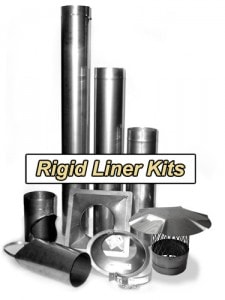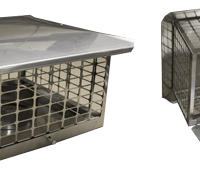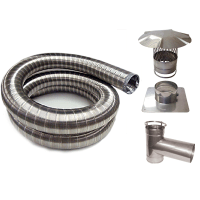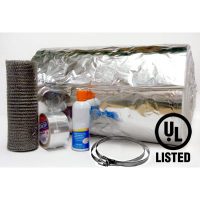Rigid Chimney Liner Vs Flex Chimney Liner
Rigid Vs. Flex
As you have researched for your purchase of a chimney liner, you have encountered a rigid chimney liner and a flex chimney liner. What chimney liner do you need? Obviously you do not want to spend extra money if it does not bring much of a benefit. We will answer 4 questions. When would you use a Rigid chimney liner? What benefits does it have? When would you use a Flex liner? What benefits does it have?

When would you use a Rigid Chimney Liner?
You would use a rigid chimney liner when you want the BEST. You would also want use rigid when you are using it for a solid burning appliance (wood, coal, pellet) that is your main source of heat. One requirement is that your chimney be straight, free from bends.
What benefits does a Rigid Chimney Liner have?
A rigid chimney liner is strong. You have the peace of mind that you have the best chimney liner on the market inside your chimney protecting you and your family from harmful fumes and a chimney fire that can be contained inside the liner. Also, when you have a wood stove you want the best draft possible with as little creosote build up.
The rigid is a perfectly smooth inner wall. Click HERE to learn how a smooth inner wall benefits you. Rigid chimney liners can take a very aggressive cleaning, which means when you are done cleaning there should be absolutely nothing left in terms of creosote.
When would you use a Flex Chimney Liner?
You would use a flex chimney liner when your chimney has bends in it. The flex is your only option in this case. But there are a few styles of flex liners available. This page will describe the difference between two of them. If you have a gas furnace, this will not create creosote, so a flex liner may be sufficient in your case.
What benefits does a Flex Chimney Liner have?
A Flex chimney liner is light weight and easier to install than rigid. The price is cheaper up front. It will bend around fireplaces and easily connect to a fireplace insert.
How To install Flex Chimney Liner
Rigid chimney liner is the best. But if for some reason it will not work in your case, seriously consider what style of flex liner you will need. All our chimney liners and components are made from stainless steel. If you can, use rigid chimney liner, it is the way to go.
Follow us on Facebook to see the latest offers and sales on rigid chimney liner kits. ![]()






